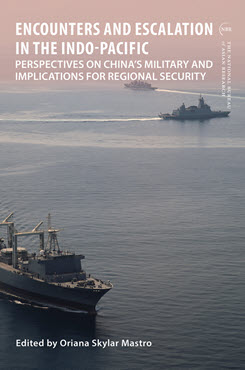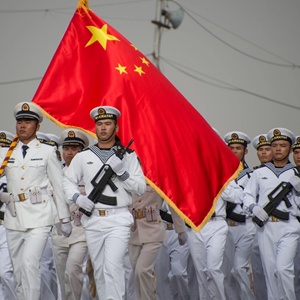Essay in NBR Special Report 108
Australian Encounters with the PLA in 2022–23
An Unstable Stability
This essay examines a dangerous encounter between the People’s Liberation Army (PLA) and the Australian Defence Force (ADF) in November 2023 in the context of the Australia-China bilateral relationship, assesses drivers of PLA behavior, and draws implications for deterrence and policy change.
EXECUTIVE SUMMARY
MAIN ARGUMENT
The PLA’s consistent trajectory of aggression toward the Australian military in encounters during 2022–23 is directed by China’s political and military leadership. It is consistent with the PLA’s encounters with several other militaries, including the U.S., Canadian, Vietnamese, and Philippines militaries. China’s goal is to reduce and eventually exclude the Australian military presence in the South China Sea and Northeast Asia. Australian military activity is an element of the bilateral relationship, with the government prioritizing a stabilized relationship after a turbulent five years. In the military sphere, Australian policy is to assert regional presence through patrols and exercises but to rely on the professionalism of ADF military personnel to not escalate in dangerous encounters. The trajectory of interaction, however, is failing to prevent China from achieving incremental gains toward its goal of reducing and excluding Australia’s military presence. Collective action to physically reverse de facto Chinese control in key locations is needed to change this trajectory, while managing the risks of escalation by coordinating a unified political approach.
POLICY IMPLICATIONS
-
Current Australian policy and regional military activity are not helping deter the PLA from making the South China Sea—and even Northeast Asia and the South Pacific—less permissive spaces for the ADF to operate in alone as well as with partners and allies.
- All the momentum is with the PLA in encounters with regional militaries, as it is able to push boundaries of behavior and rely on the restraint of others. As a consequence, China is achieving incremental de facto control of spaces in the region and reducing other countries’ sovereignty, presence, and control.
- To shift this trajectory, countries need not adopt a “waterfront” approach where every Chinese action and any place subject to growing and assertive PLA presence is recontested. Instead, countries should identify a small number of places where they can focus their collective effort, with military cooperation being enabled by unified political messaging to mitigate the risk of escalation.
Michael Shoebridge is Director of Strategic Analysis Australia.



 Unpacking China's Military Decision-Making: Perspectives from the Region
Unpacking China's Military Decision-Making: Perspectives from the Region
